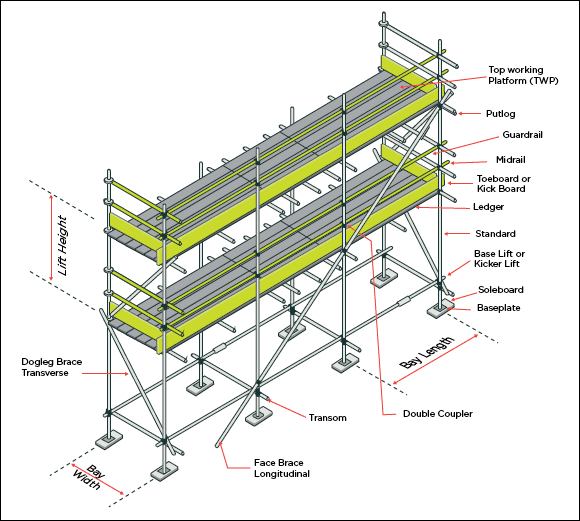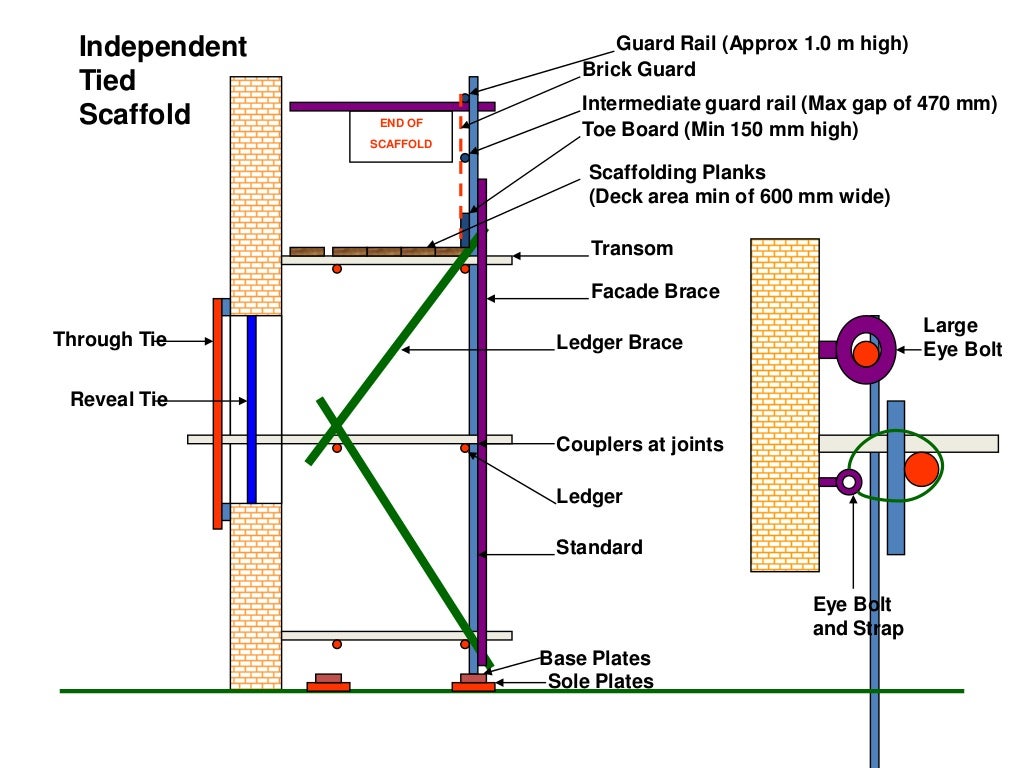

Guard rail: Guard rails are one form of protective barrier on scaffolds.Scaffold tie: Scaffold ties are used to secure the scaffold to other structures.Coupler: Also called couplers are fittings used to join the various components of a scaffold together.

Bridle: Bridles are horizontal braces used to bridge openings.Brace: Braces are diagonal tubes that lend rigidity to the overall scaffold structure.Batten: Alternately called board or decking, batten refers to the planks that form the standing platform for workers on a scaffold.They are load-bearing, often holding up the boarding planks, called batten or decking board, on which workers stand. Transoms: Transoms are putlogs whose both ends intersect with ledgers.Putlogs: Putlogs are horizontal braces, running perpendicular to the wall, that supports the standing platform of the scaffold.Ledgers: Ledgers are horizontal braces, running parallel to the wall, that supports the standing platform of the scaffold.They often comprise some joint types, which are connected to the horizontal braces, called ledgers, that form scaffolds. Standards: Also called uprights, standards are the vertical poles forming the scaffold.It supports the vertical poles, called standards, that form the scaffold. Base jack: Sometimes known as the soleplate, the base jack is the load-bearing base for the scaffold that consists of plates placed on the ground.Typically, it is formed by one or more planks that are connected by various supports, depending on the scaffold’s particular configuration.īelow is a list of the main parts of scaffolding with their functions explained: Scaffolding can come in many different variations. The assembly and disassembly of aluminum scaffolds are therefore also quicker. Although aluminum is more expensive than steel, it is often the preferred material for many types of scaffolding because it is light and therefore easier for workers to carry. These metals offer superior strength and sturdiness as well as the capacity to be built up to significant heights. While some countries use the low-cost option of bamboo or wooden scaffolding, large-scale construction projects employ other materials such as steel or aluminum types. Scaffolding is built in multiple variations, depending on construction workers’ task requirements and the specifications of the building they are working on. Many kinds of scaffolds are also used inside buildings, allowing workers to reach hard-to-reach places such as ceilings or electrical fixtures. This, in turn, allows them to safely and efficiently complete tasks such as painting, plastering, and brickwork on the outside of buildings. These temporary work platforms, put up around buildings and in civil engineering structures, allow workers and their tools and materials to be safely transported along their multistoried heights. Around the world, construction is generally not possible without the use of the right types of scaffolding.


 0 kommentar(er)
0 kommentar(er)
